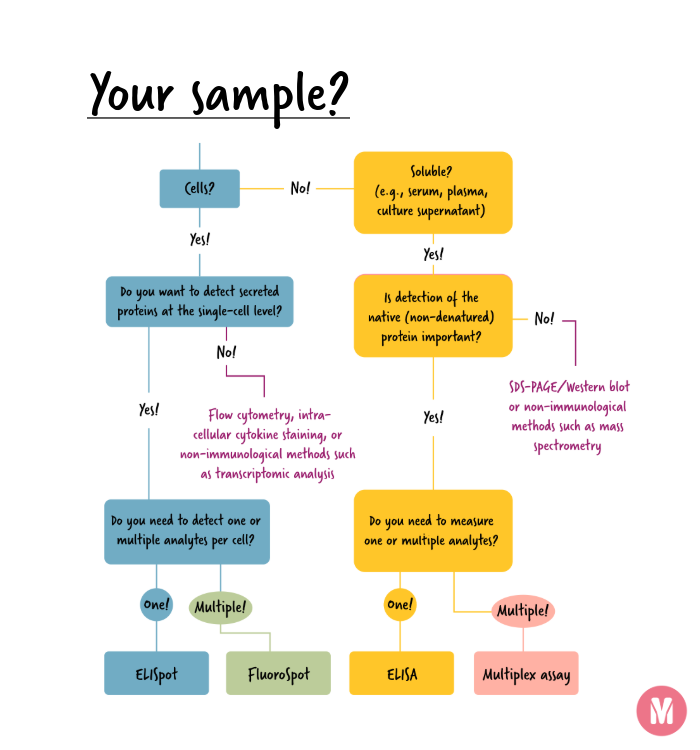ELISpot assay principle
Mabtech: The enzyme-linked immunospot (ELISpot) assay is an extremely sensitive immunoassay performed in a 96-well plate format to quantify protein secreting cells.
Not sure whether to use ELISA or ELISpot? This Mabtech guide breaks down the differences to help you choose the assay best suited for your project.
When you’re working to understand immune responses, disease progression, or treatment efficacy, measuring proteins like cytokines, antibodies, or growth factors is often a central part of the process. Two commonly used tools for this are ELISA (Enzyme-Linked Immunosorbent Assay) and ELISpot (Enzyme-Linked ImmunoSpot). Both are reliable, but each has its own strengths depending on the question you’re asking.
At first glance, ELISA and ELISpot seem similar. Both rely on antibody-based detection and enzyme-driven signal amplification. However, the key difference lies in what they measure and how they do it.
ELISA is used to measure the amount of a specific protein in a liquid sample, such as serum or culture supernatant. It is a preferred method when you need robust, repeatable, and scalable data, especially when working with large sample sets. For example, if you are monitoring changes in cytokine levels over time, ELISA is a strong choice.
ELISpot, on the other hand, offers single-cell resolution. Rather than measuring total protein concentration, it shows how many individual cells are actively producing the protein of interest. This is especially useful when studying rare immune responses or assessing functional cell activity, such as in vaccine development, T-cell monitoring, or cancer immunotherapy.
| Feature | ELISA | ELISpot |
| Sample type | Fluids (e.g., serum, plasma) | Live cells (e.g., PBMCs) |
| Readout | Protein concentration | # of secreting cells (SFUs) |
| Sensitivity | Moderate to high | Very high |
| Throughput | High (easily automated) | Moderate (more manual) |
| Best used for | Quantification across samples | Functional single-cell analysis |
If your goal is to measure how much of a given protein is present across multiple samples, ELISA is the way to go. It is high-throughput, standardized, and ideal for comparing sample groups or conditions.
If you need to know which cells are producing a protein and how many of them are doing so, ELISpot provides deeper insight. It is particularly valuable for immunology research that requires functional readouts at the single-cell level.

There is also value in using ELISA and ELISpot together. ELISA provides a broader overview of protein expression, while ELISpot gives detailed insight into the cellular sources behind that expression. Combining both techniques can give you a more complete picture of the immune response you are studying.
Need help figuring out which assay is right for your next experiment? Explore Mabtech’s full guide here.
We gladly support you by keeping you updated on our latest products and the developments around our services.